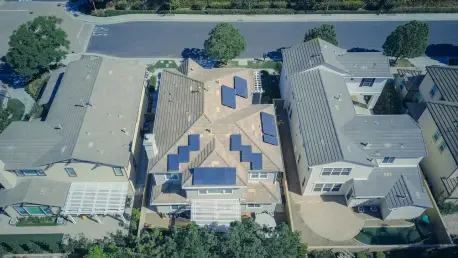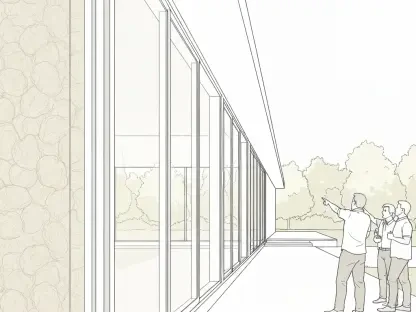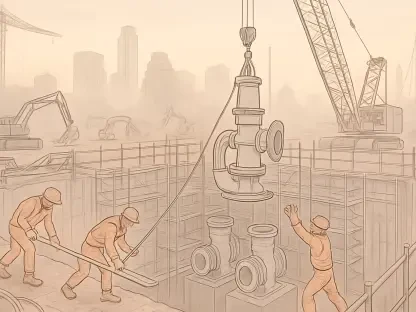In recent years, rapidly advancing housing technology has transformed the landscape of affordable housing. This article explores the significant advancements in this domain and evaluates the role of efficient technologies in addressing housing shortages. As the global population swells and urbanization accelerates, the demand for affordable and sustainable housing solutions escalates, propelling this technology to the forefront of industry discussions.
Emerging Affordable Housing Technologies
Affordable housing technologies have emerged as essential solutions in addressing housing demands while integrating sustainable living practices. These technologies incorporate innovative design principles, environmentally friendly materials, and energy-efficient systems to reduce construction costs and environmental impact. By prioritizing these aspects, developers aim to ensure affordability while enhancing the quality and sustainability of housing projects.
These advances are rooted in the necessity to mitigate the economic strains felt by many communities. As part of a broader push for responsible housing development, affordable technologies are becoming increasingly relevant. The focus is not only on reducing costs but also on offering long-term solutions that prevent resource depletion and enhance livability standards.
Pioneering Features in Affordable Housing
Sustainable Construction Innovations
A pivotal feature of affordable housing technology is the use of sustainable construction methods. Timber frame manufacturing exemplifies this approach, merging material efficiency with reduced environmental impact. This method involves utilizing renewable wood resources, ensuring minimal waste during production. Timber frames are not only cost-effective but also enhance thermal insulation, providing energy savings for residents.
By utilizing such methods, housing developers ensure that construction is not only environmentally conscious but also economically viable. This holistic approach fosters a construction trend that aims at longevity, energy conservation, and minimal carbon footprint, aligning with contemporary environmental standards.
Advancements in Energy Efficiency
Energy efficiency is another cornerstone of affordable housing technology, with innovations such as air source heat pumps leading the way. These systems harvest and amplify thermal energy from the air, delivering notable reductions in carbon emissions compared to conventional heating methods like gas boilers. Expected efficiency gains translate into lower utility bills and smaller environmental impact, appealing to cost-conscious tenants.
The integration of energy-efficient systems demonstrates a shift in housing technology toward sustainable power utilization. The deployment of such solutions indicates a growing commitment to eco-friendly practices that meet the demands of an increasingly energy-conscious society.
Current Trends and Developments
The burgeoning field of affordable housing technology is witnessing transformative trends that favor innovation and adaptability. Recent developments are characterized by advanced materials, cost-efficient construction techniques, and intelligent design practices. As consumer awareness increases, the implementation of these technologies has spurred heightened expectations toward sustainability and affordability.
Simultaneously, shifts in industry behavior accentuate a collective movement toward embracing these technologies. Developers are optimizing construction practices to meet evolving regulatory standards and aligning with futuristic housing designs. This alignment is steering market preferences towards solutions that fuse cost-effectiveness with environmental stewardship.
Implementation in Real-world Contexts
Affordable housing technologies are finding successful applications across various sectors, meeting the diverse needs of communities. In urban settings, advancements are revolutionizing high-density housing by accommodating a range of socio-economic demands. These innovations extend beyond individual homes, influencing entire neighborhoods and community infrastructures.
Case studies reveal their practicality and impact, such as Karbon Homes’ project in North Durham, which effectively utilized timber frames and air source heat pumps. These implementations set industry benchmarks by showcasing the tangible benefits of marrying innovative technologies with community welfare objectives.
Overcoming Challenges in Housing Technologies
Despite the breakthroughs, several technical and regulatory challenges persist, impeding widespread technology adoption. These stem from existing infrastructures, market skepticism, and policy limitations that discourage investment in novel housing solutions. Addressing these obstacles requires collaborative efforts between policymakers, industry leaders, and technological innovators to devise comprehensive solutions.
Ongoing developments are focused on overcoming barriers to entry by refining technology affordability and simplifying integration processes. This concerted effort is essential to realize the widespread benefits offered by these innovative housing technologies.
Future Directions in Housing Technology
The future of affordable housing technologies holds promise for continued advancements and potential breakthroughs. Emerging trends suggest growing momentum toward even greater energy efficiency and automation. Cutting-edge technologies are expected to enhance housing durability, integrate smart home systems, and improve regulation compliance.
The long-term impact of these advances on the housing industry is anticipated to reshape the societal approach to living spaces. As innovations persist, the industry is poised to significantly influence community resources and living standards, creating inclusive, sustainable environments.
Summary of Review
The reviewed affordable housing technologies have made substantial progress in addressing the contemporary challenges of housing scarcity and environmental considerations. Key features such as sustainable construction methods and energy efficiency set new standards for industry practice. While challenges remain, the future outlook suggests ongoing improvements and wide-reaching impact, reinforcing the role of technology in transforming housing solutions and shaping the future of living spaces.









